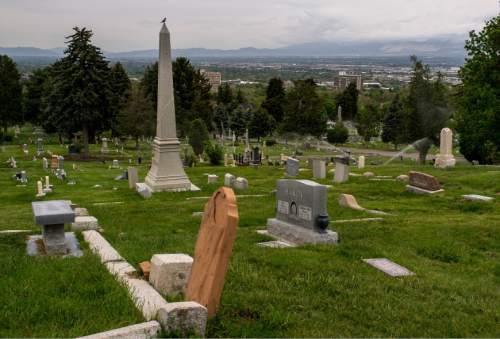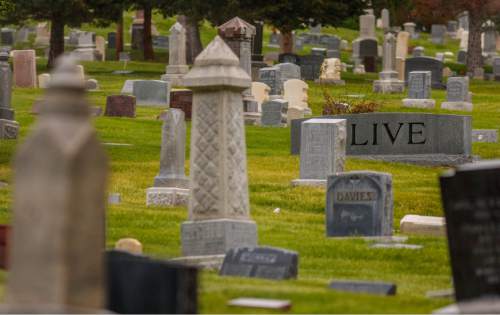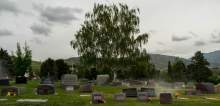This is an archived article that was published on sltrib.com in 2016, and information in the article may be outdated. It is provided only for personal research purposes and may not be reprinted.
The Salt Lake City Cemetery is working to create a master plan that will guide future decisions to make the cemetery more sustainable and enjoyable for future generations.
Cemetery representatives held an open house last week, where the public was able to address their concerns and provide input into the future of the cemetery.
Sexton Mark Smith explained that the cemetery has no more room to expand and only 800 plots left to sell. Since plot sales are the cemetery's biggest source of revenue, the cemetery needs to find new revenue streams without sacrificing the ambiance of the area.
Among community suggestions were asking for donations; tours; adding beekeeping; hosting a 5K run fundraiser; leveraging the cemetery as an important historic site; and establishment of a cemetery gift shop.
Smith, who has been sexton since 2002, said the cemetery is not just a burial site. Community members come to the 120-acre cemetery to bird watch, enjoy the views, admire the art and jog. Smith said they are always respectful.
"Cemeteries are for the living," he said. "We need to teach the youth that cemeteries are places to visit and should be used as green space."
The cemetery is also an important place to study Utah's history.
Smith calls it " an historical jewel. … The individuals in that cemetery built this city. Cemeteries remind us of who we are."
Community members wrote down suggestions for the master plan, with emphasis on preserving the peaceful atmosphere and historical features. Any new additions, community members suggest, should be beautiful and environmentally conscious.
The planning team hopes to finish the master plan by February 2017. Another open house will be held this fall and another early in 2017.
The Salt Lake City Cemetery is located between N and U streets and Fourth Avenue and Wasatch Boulevard. It has 9½ miles of roads. There are about 124,000 people buried in the cemetery, including numerous Utah governors and Salt Lake City mayors and many LDS Church leaders.
The master plan is intended to be a 20-year course of action that officials will add to based on contemporary needs.
Dustin Wiberg, a senior associate at G Brown Design who specializes in landscape cemetery architecture, is part of the planning team working on the master plan. Wiberg believes there are three main points that need to be considered to create the blueprint. Planners need to understand what needs to be preserved, how to make the plan work financially in the long-term and, finally, planners need to understand how people utilize the cemetery and what uses people like, want to enhance and want to introduce.







